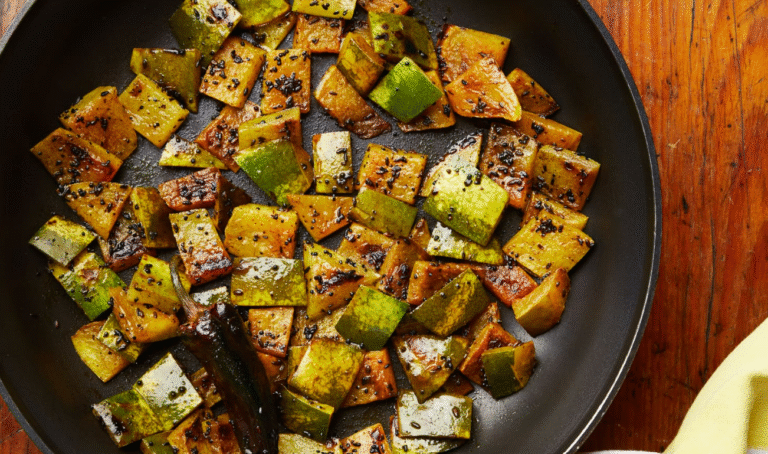Watermelon Rind Bhaji
Watermelon Rind Sabji using the green edible skin of watermelon is a Vegan, No onion No garlic North Indian Style sabji/sabzi or dry vegetable. Again this sabji is taken from my mom’s recipe collection where she has been making this for ages.

Long before it piqued the fancy of restaurant chefs, kitchens in India have been repurposing scraps. Sustainable, no-waste cooking has always been deeply ingrained within our communities — both in vegetarian applications using scraps like potato peels, as well as meat-heavy dishes featuring goat livers and brain.
Among the most favored of my meat-loving Parsi community is chora ma khariya, a cobbling together of beans and goat trotters. In Mumbai’s Bohri Mohalla, known for its excellent street food of the Muslim Bohri community, udders are amongst the most sought-after dishes. And fishy bits and bobs are as beloved as they are ubiquitous in Bengali cooking. A classic dish being muror dal, strongly spiced lentils shored up with fish head).
Making Use of Fruit Scraps
Fruit scraps are widely used as well. The Jain community prepares a banana peel dish strewn with just chili powder, turmeric, cumin, and coriander. The southern state of Tamil Nadu makes an orange peel kozhambu, a savory chutney-like dish usually eaten as a side with yogurt-rice. This recipe, meanwhile, is about watermelon rinds, one of the most versatile scraps I know.
Ingredients for Watermelon Rind Recipe
Before I got to work creating a watermelon rind recipe, I sent a text to a few friends, asking them how they used watermelon rinds in their kitchens. The replies flooded in, yielding far too many responses to fold fully into these paragraphs, but here is a précis.
I learned of watermelon rind furled into polo (a sort of dosa from Karnataka state) and of saasmi, an Udupi-style gravy dish underpinned by the warmth of freshly ground coconut and grated watermelon rind. It’s used in barfi (a dense, milk-based confection), slivered into chutneys.